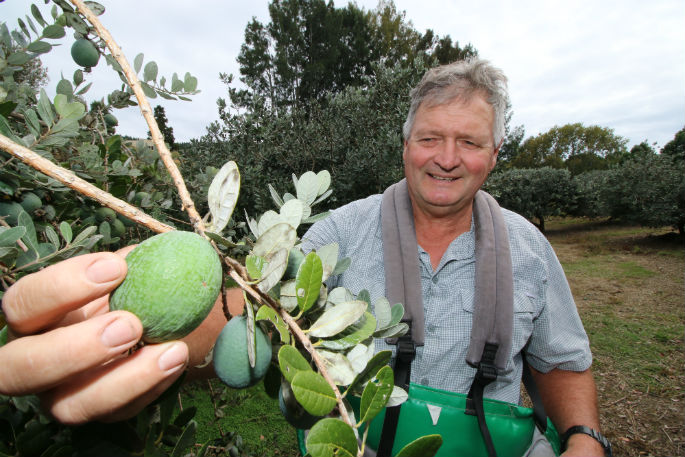Starting out with sheep 30 years ago, the Honeyfield family at Welcome Bay, Tauranga, have diversified their 100ha farm into four different revenue streams – and they're about to plant another produce on-farm this spring.
While it's commonplace today to diversify into new markets, Colin Honeyfield began doing this not long after he and his father Joe Honeyfield bought the farm at Welcome Bay in 1989 – and he's not finished yet. Why? Because having multiple revenue streams pulls risk out of the volatility of different markets.
'Yes, big time,” says Colin. 'For example, if one market is high this year and crashes the next, you still have other incomes. And if it does crash, you can save and use that year to breed up your numbers – it gives you a range of options.”
'For example, we've had years where we've been in all sheep and our income has halved in two seasons. And it was just because of price in the end that we diversified. Today, it's called building resilience in your operations.”
Colin was 18 when he leased his first block of land. After getting married the farm was purchased in Welcome Bay; today they also utilise lease land up the road.
Feijoas
They started with basically all sheep on the farm but soon began harvesting feijoas. 'The feijoas were already here but we just worked out better ways to manage it…we do as much as we can for the local supermarkets and whatever is not up to standard we have a juice contract for Simply Squeezed,” says Colin. 'It took about five years to establish a good income from them.”
Today 1000 feijoa trees produce an average of 20-25 tonne per year – with a 50/50 split going to supermarkets and juicing.
But with locals selling the fruit at stalls, on the roadside and online, Colin says demand does drop pretty quickly – and coupled with difficulties finding labour, and the recent minimum wage rise, Colin says 'the margins are pushed now”.
So he's cut from four to two workers and himself to pick the feijoas during April and May. At this time of year he's also busy with autumn-calving beef cows.
The farm has gone into breeding beef cattle in the last few years – both Angus and Charlois. 'We're trying to become a breeding property, rather than trading cattle.”
Charlois cattle
Colin has 25 Angus cows to the Angus bull and then about 40 Angus cows to the Charlois bull. 'We've topped the sale in the last two weaner fares – but we're back a bit from last year.”
The aim now is to increase Charlois numbers 'because they have better growth and will be worth more as a weaner than Angus cattle”.
In winter they also graze 150 cows for dairy farmers. 'That's an extra income for us as well.” Colin utilises cross-grazing, which he finds beneficial for both the cows and the 400 Romney sheep on-farm. 'Sheep don't like long grass, so the cattle are the groomers really.”
Sheepmeat has been bringing exceptional prices in the last two years – 'especially off-peak when you can achieve record prices” but the income from wool is 'virtually non-existent” once shearers are paid.
After decreasing numbers in past years amid low prices, Colin is now slowly breeding up his flock again – as opposed to spending a lot buying in ewes. He's continuously reviewing how much he has invested in each operation by following the markets and says mostly it's a case of having some confidence in them.
Sheep increase
'Sheep are at a level now where there is a slight shortage. This is why we're slowly going to increase numbers. And it's the same with cattle – many have cut numbers because dairying has been down a bit, so they go into having their own stock and that's what kept cattle [prices] up a bit.
'We'll probably go out of dairy grazers soon and have more of our own stock, where you do make more money.”
Colin says many farms now diversify but it depends where you're located too. 'Here in the Bay of Plenty, we're lucky we can grow a range of horticulture crops. In the South Island, options are limited.”
As a result, Colin is going into avocados. This spring he'll plant 120 avocado trees. 'The family is keen on them so we're going to try them out on the northernmost part of the farm and hopefully the warmest part. Hopefully, this will provide another viable income stream in future years.”
But diversification does bring an extremely busy lifestyle for the Honeyfields. They're kept busy year-round with shearing, lambing, beef cows, dairy grazers and feijoas.
'We shear in early-April and again in November, the cattle calve in autumn and spring; and we start lambing in mid-July just after the dairy grazers go home to calve,” says Colin.
'With the feijoas we pick seven days a week through April and May. You can't pick the whole tree at once; you have to pick it when it's ready.”

